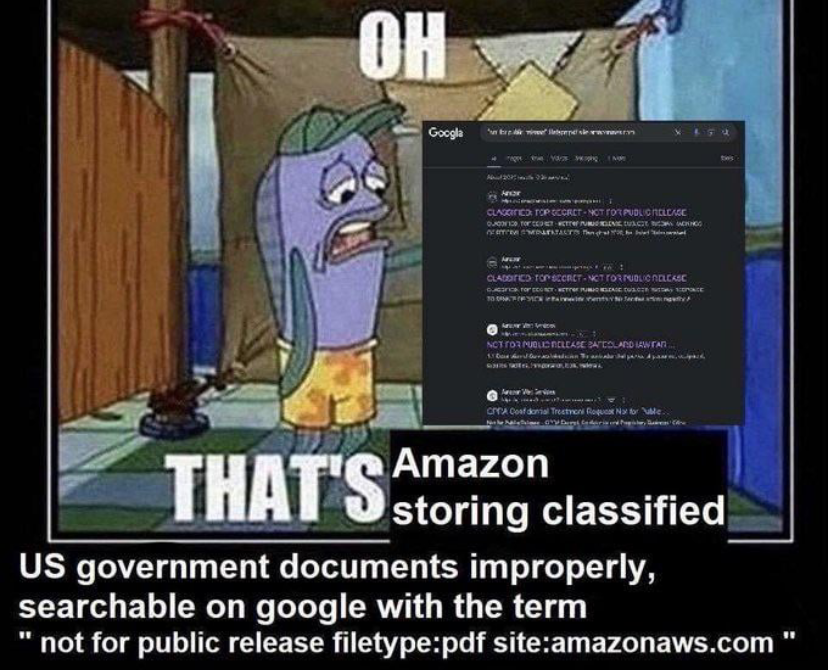this post was submitted on 07 Apr 2024
493 points (95.6% liked)
Security
5014 readers
1 users here now
Confidentiality Integrity Availability
founded 4 years ago
MODERATORS
you are viewing a single comment's thread
view the rest of the comments
view the rest of the comments

Documents marked "not for public release" aren't classified. They're what's called controlled unclassified information (CUI). It's anything from PII, law enforcement victim records to sensitive (but unclassified) technical manuals. There's dozens of categories if anyone cares to look at them: https://www.archives.gov/cui/registry/category-marking-list
They shouldn't be sitting out there, but it's also not a crime.
The first result I got was labeled "classified: top secret - not for public release" so ~~the label is more broadly applied than just CUI.~~ my assumption that the document was legit was wrong.
That's pretty obviously fake. This is what the real markings look like: https://www.archives.gov/files/isoo/training/marking-booklet-revision.pdf
I mean, here's the document. Unfortunately I am literally incapable of reading the dense material you provided, so you'll have to be the judge. https://s3.amazonaws.com/tabroom-files/tourns/16458/postings/23658/Sunvite2021FinalsBriefing1.pdf
In a properly classified document, each paragraph will be preceded by a "portion marking" indicating the level of classification and possibly compartmentalization. For example, the "(U)" in this quote, indicating the paragraph is Unclassified.
A Top Secret document would have one or more portions with a "(TS)"
Additionally, an "overall classification marking" is also required. This is a marking at the top and bottom of every page of the document, providing the overall classification (and compartmentalization) of the document, even if all the portions on that particular page are unclassified. "TOP SECRET" at the top and bottom of the page.
Finally, the document needs a classification authority block, indicating who classified the document, why it was classified, and when it should be declassified.
The absence of portion markings, overall markings, and classification block, or misuse of any ("Not for public release") is a good indication that the document is fake.
Thanks for the rundown!
100% fake.
That's not at all a valid classification marking.